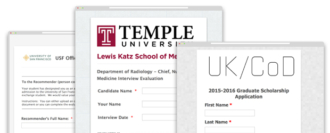Humanities teachers have a reputation for being slow to incorporate technology in the classroom, despite strong encouragement to embrace new, digitized ways of teaching subjects such as languages, history, social studies, and literature.
“The pressure on traditional humanities departments comes at a time when philosophy, ethics, arts, and science are converging,” writes Josh Macht, chief product and innovation officer at Harvard Business Publishing. “Just listen to pretty much any of the recent TED talks about artificial intelligence. We’ll need to develop not just the technical skill to build better tech, but also the moral and ethical reasoning to guide how society deploys them.”
One way to prepare students to think about how humanity interacts with their world in a time of rapid technological advancement is to integrate classical learning with modern tools.
Pro Tip
For an insightful look into the future of higher education, explore “8 Top Trends in Higher Education to Watch in 2024” on Jotform’s blog.
Digitized humanities grows analytical skills
As a teacher, one of your top priorities is to encourage your students to learn and to think critically. Humanities courses are designed not just to present students with static information about important dates, times, and people. Rather, this information is taught to get students thinking and asking questions about how humanity relates to each other and the world around them.
To encourage critical thinking, English Ph.D. candidate Christina Katopodis incorporates “critical karaoke” into her class. With a music video playing in the background, students discuss songs of their choice and how they relate to modern social issues. Topics can include gender fluidity, refugee crises, and race, among others. Many students choose songs because they’re able to relate part of their own personal story to the larger social narrative.
When students integrate visual, audio, and written material with their own experience, their learning goes deeper. Students are better able to think about why certain events happened, how these events affect people today, and what should be done about similar situations in the future.
There are many digital ways to get students to engage with poetry, history lessons, and other humanities material. They can write on public forums, create videos explaining certain topics, or even play online humanities games, like Walden, “an exploratory narrative and open world simulation of the life of American philosopher Henry David Thoreau,” to engage with material more meaningfully.
Technology helps put the purpose of humanities into practice
One purpose of humanities courses is to teach students about the ways humans interact with the world around them — and arguably, to improve the human experience. With the development of technology, students are better able to translate the purpose of humanities into action.
“Last year, at the conclusion of our economics and opinion-writing units, the second graders at my school learned about Puerto Rico and the devastating effects of Hurricane Maria,” says elementary teacher Courtney Sears. “They designed a fund-raiser and recorded videos of opinion pieces they wrote about why people should donate money. After sharing their videos with families and other students on our Seesaw blog, they raised over $300.” This activity served multiple purposes — it taught students about what was going on in the world around them, how to formulate an opinion, and enabled them to contribute to real-world relief efforts.
Lessons and activities like this bring what students are learning to life. Many teachers hear the question, “Why am I even learning this?” With activities like these, teachers can relate their lessons to something tangible.
Using tech in class teaches skills students will need in the future
The workforce is constantly changing. As a result, humanities teachers have the challenging responsibility to prepare students for a workforce that no one understands. But one thing is certain — technology will play a big part in it.
Although there has been great emphasis on how STEM classes prepare students for future careers, humanities classes also play a large role. Some of the most in-demand skills will be the ability to communicate well, collaborate, and be creative. History, political science, English, and art classes offer students opportunities to develop these skills.
Jennifer Osborne, a high school English teacher, discusses several ways to foster these skills. For example, she encourages student collaboration by using Google Docs and a digital collaboration tool called NoodleTools. Students work together on group projects, and Osborne gives feedback and guidance when needed. An added benefit is that Osborne can see who is actually creating the work that’s submitted.
These tools help prepare students for a workforce that has a growing percentage of remote workers who use tools like Google Docs, Slack, and other online collaboration tools. Jobs will certainly look different by the time today’s students graduate, but the need for creativity, collaboration, and communication skills — which are already in demand — will only grow.
Consider why you should use tech before asking how to use it
Digital humanities specialist Hannah Jacobs offers insight on many engaging ways for teachers to incorporate technology in the classroom, but she also advises teachers to consider why they want to make a project digital in the first place.
Will it encourage students to draw more connections between topics? Will it enable them to think more critically? Will it enhance understanding?
Determining what you hope your students will gain from a digital project will help you decide on which projects to incorporate into your classroom.










































































































Send Comment: